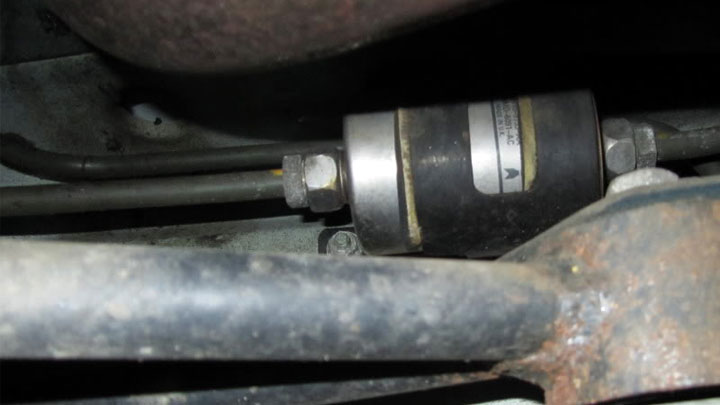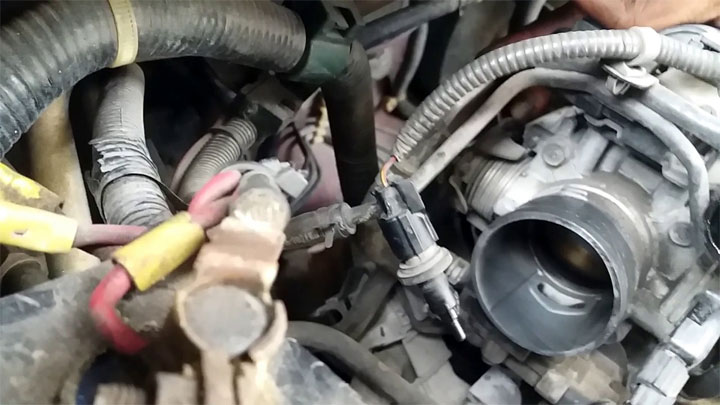Didnt Turn the Key the Whole Way Then Tried Again and the Car Took a Little Bit to Start
Last Updated on November 17, 2021
Anyone who owns a vehicle has likely experienced the frustrating problem of a auto that cranks but doesn't start, even after repeatedly turning the cardinal in the ignition. However, don't allow desperation proceed you from logically figuring out why your vehicle cranks but won't start normally.
Demand immediate assist for your car problem? Chat online with an proficient:
Related: 7 Reasons a Car Starts And so Immediately Dies
Reasons a Machine Cranks But Won't Plough Over
Cranking the car is engaging the starter to energize the engine. The starter causes the flywheel to turn which rotates the crankshaft when all is working correctly. Sometimes this process is interrupted when there is a hitch in the system, and the auto engine won't continue to run afterwards it "turns over" or cranks.
For the engine to kickoff normally, information technology requires sufficient fuel pressure, an appropriately timed spark and normal compression. When it doesn't start, the problem usually lies with one of these systems though the starter system tin can besides be the culprit. Beneath are some mutual causes of an engine that cranks just doesn't kickoff and some troubleshooting tips to identify the cause.
Encounter Also: What To Practice If Your Car Shuts Off While Driving
#1 – Spark Problems

Lack of spark may occur due to a damaged ignition module, a faulty crank position sensor, a flooded engine (sometimes happens in older or high-mileage cars), bad spark plugs, or a problem in the ignition circuit, such as the wiring, security system (the fuel flow may have been shut off to prevent theft or the fleck in the key could be faulty), or a malfunctioning ignition switch.
An inappropriately timed spark can occur if in that location'southward an issue with the timing system. This can be difficult to diagnose, only a timing light is a useful tool to check that all the cylinders are firing exactly when they are supposed to.
To determine if at that place is a problem with the spark, visually check the benefactor cap (if your vehicle has one) and the spark plug wires, as these may dethrone with age. A spark tester should be used to check for a proper arc from each spark plug wire or coil.
If you suspect the engine may be flooded afterward repeated attempts to start the car, remove the spark plugs and let them dry, then replace them and attempt again.
Related: Symptoms of a Hydrolocked Engine
#ii – Lack of Fuel Flow

Problems with fuel flow may be due to a damaged fuse for the fuel pump, a bad fuel pump, contaminated or incorrect fuel in the tank, a faulty or clogged fuel filter or injector, or simply an empty fuel tank (the fuel estimate is not ever accurate).
Having the appropriate fuel force per unit area is important for your motorcar engine to start or run, peculiarly for fuel-injected engines. Listen to hear the fuel pump fizz for a few seconds as you turn the ignition to the "on" position.
If no buzz is heard from inside the auto or back by the fuel tank, the pump may exist expressionless and fuel is not reaching the engine at all.
Note that some fuel pumps only catamenia while the car is cranking and so some cars don't have an audible fizz. Consult the internet or your owner'south manual for more information for your specific model.
If you do hear the buzz of the fuel pump, y'all can try putting a flathead screwdriver on tiptop of each injector (with the handle adjacent to your ear) while the car is cranking. If the injectors are firing, you lot volition hear a faint ticking sound from each injector, transmitted by the shaft of the screwdriver.
Some cars have a safety feature called an inertia switch which shuts off the flow of fuel automatically afterwards an impact. If your vehicle recently sustained an impact, check your owner'due south manual to run into if this feature is present in your vehicle and learn how to manually switch information technology to allow fuel to catamenia once more.
Related: What to Do if Your Machine Breaks Down
#3 – Low compression

Each cylinder needs compression for right engine function. The pinch ratio compares the maximum cylinder book to the minimum cylinder volume during each stroke of the piston. If one or more cylinders accept depression compression, air from the combustion bicycle leaks past the piston rings which limits the corporeality of piece of work that cylinder can practice to spin the crankshaft.
Compression problems tin can be caused by a broken or loose timing belt or chain or a snapped overhead camshaft. An overheated engine is another severe problem that tin prevent your car from starting.
Endeavour using a pinch gauge or tester to run into if you have a problem with the compression in your car. If so, a leak downwards test is a secondary examination to cheque for leaks in the cylinder. A professional mechanic can perform these tests and examine the cylinders if you don't experience comfortable checking yourself.
#4 – Ability Supply Bug

Some other possible problem is a weak starter motor that uses a lot of amps to crank the engine, then doesn't have much juice left to switch on the fuel injectors and ignition system. In this case, you will probably notice that the starter makes an unusual noise when you attempt to crank the engine or it doesn't turn over at all.
Weak or corroded battery cables or a dying battery can contribute to the problem as well. Bank check the voltage of the battery with a multimeter while cranking the engine. It should show over x volts.
Cheque for diddled fuses by visually removing and inspecting the wiring of each fuse when the car is close off. If they appear to be in good status, put them back in and then endeavor turning the car ignition into the "on" position and using a test light to bank check each fuse for electric current flow. Supersede any damaged fuses with new ones from an automobile supply store.
Troubleshooting Advice

If the engine cranks but won't get-go, turn the car off and remove the air inlet tube fastened to the throttle torso. So spray a minor quantity of starting fluid into the engine after gently pushing the throttle open. With that done, try cranking the engine once once more.
If the engine starts merely dies after a few seconds, this ways that it has no fuel but the spark and compression are okay. However, if the engine does not start, it almost certainly lacks spark.
Avoid repeatedly cranking the car engine to attempt to make information technology beginning, as this tin can wear out the starter or drain the battery.
If yous must try multiple times, wait several minutes for every 15 seconds of cranking performed to allow the starter to cool downward. It shouldn't take more than a couple seconds per endeavor to know if you've resolved the issue.
Checking sensors and actuators for problems is critical, as modern cars have a variety of electrical components that can cause failure in the engine starting procedure.
The all-time way to practise this is to bank check the car computer for codes (faults in the electrical arrangement) with a scan tool that can be found at virtually auto supply stores. Most of these problems will too cause the check engine light to illuminate, but not all of them.
Source: https://cartreatments.com/engine-cranks-but-wont-start/
0 Response to "Didnt Turn the Key the Whole Way Then Tried Again and the Car Took a Little Bit to Start"
Post a Comment